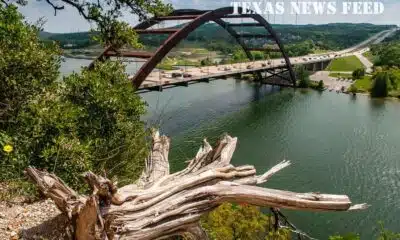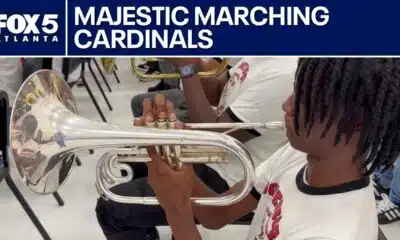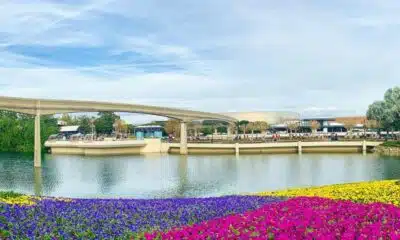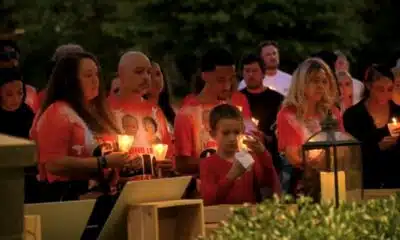News from the South - Louisiana News Feed
Trump withdraws new pipeline rules inspired by CO2 leaks in Mississippi, Louisiana
Trump withdraws new pipeline rules inspired by CO2 leaks in Mississippi, Louisiana
by Tristan Baurick, Verite, Louisiana Illuminator
March 8, 2025
Nearly five years after a pipeline spewed poison gas across a Mississippi town, federal regulators appeared ready in recent weeks to institute new safety rules aimed at preventing similar accidents across the U.S.’s fast-growing network of carbon dioxide (CO2) pipelines.
But the proposed rules, unveiled five days before the end of Joe Biden’s presidency, were quietly derailed during the first weeks of President Donald Trump’s second term.
A federal pipeline safety official not authorized to speak publicly said the proposed rules were “withdrawn” in accordance with a Jan. 20 executive order that freezes all pending regulations and initiates a review process by Trump’s newly appointed agency leaders. Putting the pipeline rules in further doubt is a Feb. 19 executive order aimed at rooting out all regulations that are costly to “private parties” and impede economic development.
Trump’s choice to lead the Pipeline and Hazardous Materials Safety Administration, which proposed the rules, is Paul Roberti, an attorney strongly backed by pipeline and energy industry groups. Roberti, who is awaiting U.S. Senate confirmation, oversaw PHMSA’s safety enforcement during Trump’s first term, a time marked by fewer citations and smaller fines than the Obama and Biden administrations.
GET THE MORNING HEADLINES.
Pipeline safety advocates still hope to push the Trump administration to approve the rules, which they say are critically important for reducing the risks of potentially deadly accidents across a growing number of states.
“It’s not dead yet,” said Paul Blackburn, an energy policy advisor for the Bold Alliance, an environmental group that tracks pipeline development. “It can be brought back by Trump, and I think the Trump administration should be pressured to do that.”
The more than 5,000 miles of CO2 pipelines in the U.S. are primarily used for enhanced oil recovery, a process that injects carbon dioxide into old oil reserves to squeeze out leftover deposits. Much of the current and predicted growth of the CO2 pipeline network is linked to the recent boom in carbon capture technologies, which allow industrial plants to store CO2 underground instead of releasing it into the air.
The CO2 pipeline network could top 66,000 miles – a thirteenfold increase – by 2050, according to a Princeton University-led study.
The Trump administration isn’t as supportive of carbon capture, but industry experts say growth will continue as companies try to meet state-level climate benchmarks.
While proponents say carbon capture will help address climate change, transporting pressurized CO2 comes with dangers, especially for rural stretches of the Midwest and Gulf Coast, where the network is concentrated.
CO2 can cause drowsiness, suffocation and sometimes death. Colorless, odorless, and heavier than air, carbon dioxide can travel undetected and at lethal concentrations over large distances.
The proposed rules would establish the first design, installation and maintenance requirements for CO2 pipelines. Companies operating pipelines would need to provide training to local police and fire departments on how to respond to CO2 leaks, and emergency communication with the public would need to be improved.
Operators would be required to plan for gas releases that could harm people within two miles of a pipeline. The proposed rules show that PHMSA finally recognizes that the threats from CO2 pipelines are different from oil and natural gas pipelines, which can spill, burn or explode, but don’t usually imperil people miles away, said Bill Caram, executive director of the Pipeline Safety Trust, a nonprofit watchdog group.
“These are relatively strong proposals,” he said. “Would these rules make CO2 pipelines completely safe? No. But it would modernize the pipelines.”
PHMSA currently has no specific standards for transporting CO2. Rules governing the CO2 pipeline network haven’t undergone significant review since 1991, according to the trust.
The proposed rules apply “lessons learned” from a 2020 pipeline rupture in Sataria, Miss., PHMSA officials said in an announcement on Jan. 15.
The rupture in the small community 30 miles northwest of Jackson forced about 200 Satartia residents to evacuate. Emergency responders found people passed out, disoriented and struggling to breathe. At least 45 people were treated at nearby hospitals.
“I have learned first-hand from affected communities in Mississippi and across America why we need stronger CO2 pipeline safety standards,” then-PHMSA Deputy Administrator Tristan Brown, a Biden appointee, said in a statement on Jan. 15. “These new requirements will be the strongest, most comprehensive standards for carbon dioxide transportation in the world and will set our nation on a safer path as we continue to address climate challenges.”
Accidental releases have occurred from CO2 pipelines 76 times since 2010, according to PHMSA data reviewed by Verite News. Of the more than 67,000 barrels of CO2 released over the past 15 years, the vast majority – about 54,000 barrels – came from pipelines owned by ExxonMobil subsidiary Denbury Inc.
Denbury operates the 925-mile pipeline network that failed in Satartia and more recently in southwest Louisiana. In April, a pipeline at a Denbury pump station near the Calcasieu Parish town of Sulphur ruptured, triggering road closures and a shelter-in-place advisory. Some residents reported feeling tired and light-headed, but local authorities reported no serious illnesses.
The pump station and pipeline weren’t equipped with alarms or other methods of alerting nearby residents when accidents occur.
Several Sulphur-area residents said they received no notice of the leak or became aware of it via Facebook posts more than an hour after the gas began to spread.
“There should have been alarms, and the whole community should have been notified,” Roishetta Ozane, a community organizer who lives near the station, told Verite in April. “I don’t trust the system we have at all.”
Unless the proposed rules are enacted, similar or worse accidents are likely, said Kenneth Clarkson, the trust’s communications director.
“In the absence of a rule, blatant regulatory shortfalls will remain, leaving the public fully exposed to the risks of CO2 pipelines,” he said.
YOU MAKE OUR WORK POSSIBLE.
This article first appeared on Verite News New Orleans and is republished here under a Creative Commons license. PARSELY = { autotrack: false, onload: function() { PARSELY.beacon.trackPageView({ url: “https://veritenews.org/2025/03/07/trump-carbon-dioxide-pipeline-louisiana/”, urlref: window.location.href }); } }
Louisiana Illuminator is part of States Newsroom, a nonprofit news network supported by grants and a coalition of donors as a 501c(3) public charity. Louisiana Illuminator maintains editorial independence. Contact Editor Greg LaRose for questions: info@lailluminator.com.
The post Trump withdraws new pipeline rules inspired by CO2 leaks in Mississippi, Louisiana appeared first on lailluminator.com
News from the South - Louisiana News Feed
Saturday 10 PM Tropics Update: One far-off tropical wave to watch
SUMMARY: A tropical wave near Africa is emerging over the Atlantic but remains disorganized. The National Hurricane Center gives it a 60% chance to develop into a depression or tropical storm, possibly becoming Gabrielle. This system may move northward, staying over the open Atlantic and away from the Gulf, posing no immediate threat. Since the last named storm in late August, stable air, dry conditions, and increased wind shear have suppressed tropical activity in the Atlantic. The next storm names are Gabrielle, Humberto, and Imelda, with only the current wave showing potential for development at this time.
Meteorologist Alexandra Cranford tracks a lone disturbance with a chance of development on Saturday night, September 13, 2025.
News from the South - Louisiana News Feed
Haynes wanted in on Wildlife bribery scheme too, informant says
SUMMARY: Dusty Guidry, a former consultant who pleaded guilty to accepting $800,000 in bribes, testified that Assistant District Attorney Gary Haynes sought involvement in a bribery scheme at the Louisiana Department of Wildlife & Fisheries. Haynes, on trial for conspiracy, bribery, money laundering, and obstruction, was previously appointed to run Lafayette’s pretrial diversion program after supporting DA Don Landry. Guidry revealed Haynes pressured him to include him in a similar diversion program scheme at Wildlife & Fisheries, receiving checks totaling $90,000. The scheme involved splitting bribes among Guidry, vendor Leonard Franques, and former department secretary Jack Montoucet, who has also been charged. The statewide program never launched.
Read the full article
The post Haynes wanted in on Wildlife bribery scheme too, informant says appeared first on thecurrentla.com
News from the South - Louisiana News Feed
OPPJ Comprehensive Plan
SUMMARY: The Ouachita Parish Police Jury is conducting a series of community meetings to gather public input for their comprehensive plan guiding future growth. Police Jury members, including Larry Bratton from District D, emphasize the importance of reflecting residents’ voices in the master plan. Community members participated in interactive stations, allocating resources to priorities like infrastructure and downtown development, to help shape goals for the next 2, 5, and 20 years. Landscape architect Matt Pizatella and partners from Atlas support the effort. Bratton stresses that without proactive planning, the parish risks costly and less beneficial outcomes in the long term.
OPPJ Comprehensive Plan
-
News from the South - North Carolina News Feed6 days ago
What we know about Charlie Kirk shooting suspect, how he was caught
-
Local News7 days ago
Russian drone incursion in Poland prompts NATO leaders to take stock of bigger threats
-
Local News Video7 days ago
Introducing our WXXV Student Athlete of the Week, St. Patrick’s Parker Talley!
-
News from the South - North Carolina News Feed6 days ago
Federal hate crime charge sought in Charlotte stabbing | North Carolina
-
The Center Square7 days ago
Weapon recovered as manhunt continues in Kirk assassination investigation | National
-
News from the South - Arkansas News Feed5 days ago
NW Arkansas Championship expected to bring money to Rogers
-
Our Mississippi Home5 days ago
Screech Owls – Small but Cute
-
News from the South - Tennessee News Feed7 days ago
Middle Tennessee State University dean filed over Kirk comments | Tennessee















































